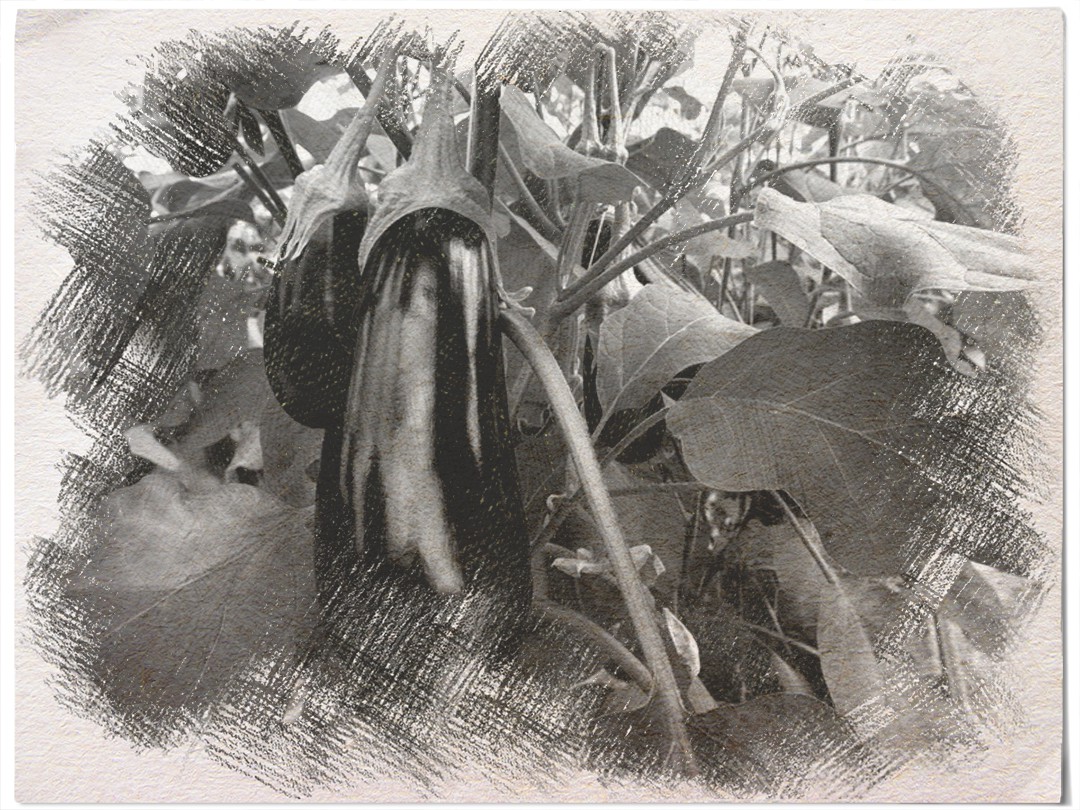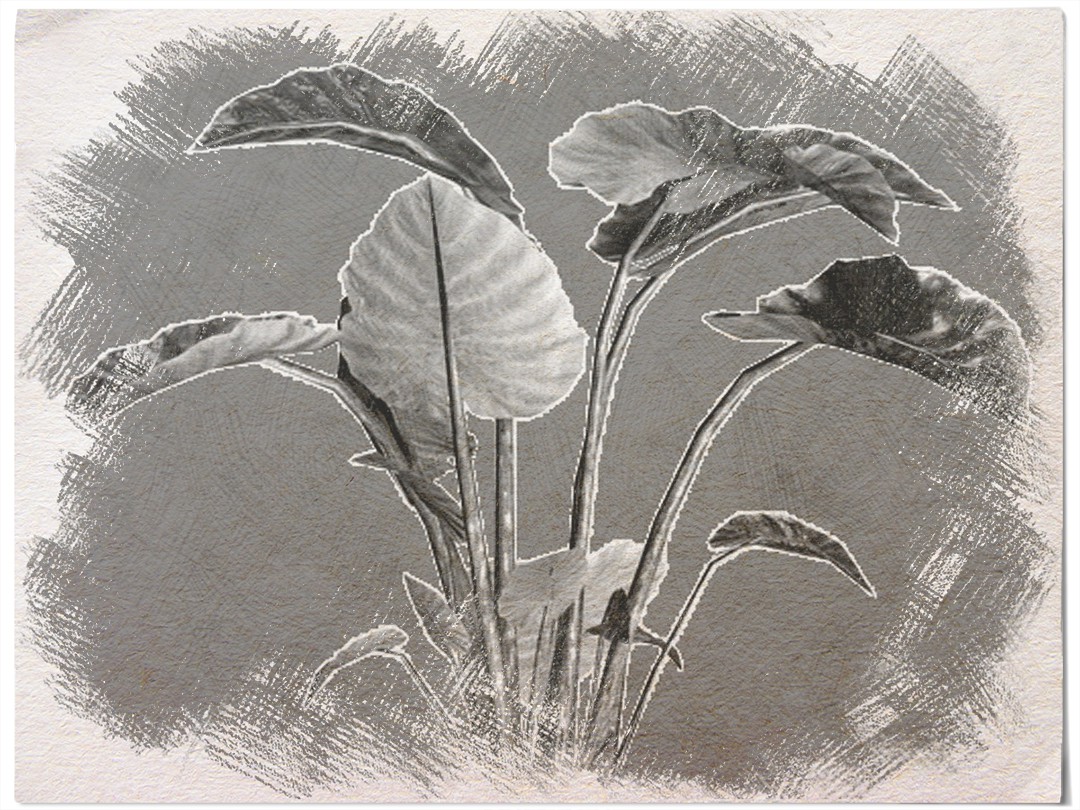Briza-taeda (Bree-za Tay-da)
The flowers are vibrant, the leaves large, and the fruit… well… I’d rather eat shoe leather. But dry the bloom silk and you’ve a medicine that no surgeon would do without.
The Briza-taeda is one of several species of ferns common to the dense Anestri’for jungle on the Chivit Continent. In particular, its wide, fan-shaped leaves, brilliant red flowers, and its purple banana-shaped fruit make this fern stand out. Briza-taeda is most often encountered in the northern sections of the Anestri’for in the Chivit Continent.
Discovery by Happenstance
I wouldn’t call it a ‘discovery’. From the way I heard the story, it was a timely intervention…
The earliest records of the Briza-taeda fern come from Ishananor’s Eastledge Merchant Company in 1252 AGC, in the captain’s logs of the merchant ship, White Crest. It was toward the end of coldwane, or spring of that year, when the White Crest dropped anchor just off Kanathi Bay.
Per Captain Nikolio Tabbal's log, they were running low on supplies and so put crew ashore to scavenge for fresh fruit and other supplies. But they discovered just how unforgiving the jungle can be to visitors.
EMC White Crest Captain's Log
Coldwane season, Hyraea, 1252 AGC, Captain Nikolio Tabbal commanding
The illness swept through the crew in a matter of hours once the landing party returned. Doctor Thyneris traced the cause to an insect bite, some form of a flying insect with golden green wings.No matter the source, the effect was devastating. With over three quarters of the crew ill, I had no choice but to raise the flag, marking us a plague ship. The flag wasn’t much of a warning, nor was there anyone to warn.We had anchored in an out of the way bay off Chivit. Kanathi Bay. It was nothing more than a name on a chart to most ships. I chose it on the off chance that there would be fresh fruit or meat to bolster our supplies.I had showed signs of the ailment the next morning after the landing party returned. Patches of my skin had cracked and turned a slate gray stone color. I had already begun to look like a patchwork clay golem not quite sown together right.We would have never left that tropical hell had Doctor Thyneris not hit upon a novel, and frankly obvious idea. The landing party had met some of the local natives. Just a small group, no more than a hunting party. But the meeting was amicable, and the trade with them for dried meat and fresh produce was priceless.The doctor reasoned that the natives living here in this green jungle nightmare would know about this problem. This… Slate Skin Plague… that seemed bent on killing us. It even seemed resistant to magical healing. If the local natives knew of this plague, they might have a means to combat it.I was willing to send another landing party with those few of my crew that seemed immune to the plague. Fortunately, Thyneris was one of those.They returned hours later with what I can only describe as a miracle. Hair-like strands from a plant that could be brewed into a spicy, almost peppery tea. This tea was the cure. I lost some of my crew, a handful who were part of the original landing party. I’ll mourn them for a fortnight and a day out of respect, as is the tradition. But thanks to the natives, and a broad-leaf fern, most of us are able to return home.
Windtracer expeditions have returned to Chivit in recent years with the Eastledge Merchant Company's support to retrace Captain Tabbal’s steps. The Briza-taeda fern was easy enough to find, but the local natives were much more difficult to track down.
Hints of settlements, or what was assumed to be hunting camps, were found East of the Kanthi Bay area. It was during the 1276 Windtracer expedition to the Temple of Draoses that Windtracer Kiyosi Valchar could finally meet the natives in the area. After days of conversation with the local healer, Windtracer Kiyosi could confirm stories of the fern’s abilities as described by Captain Tabbal.
It wouldn’t have been so unnerving except that their local herbalist, an elder, took one look at me and said ‘Hm, expected you are’. That really put the conversation off on an odd start…
Basic Information
Anatomy
Briza-taeda stand out from other ferns and plants in the Anestri’for in part because of their appearance but also their structure. While they are a fern, Windtracer herbalists who study the plant feel this fern is one of only five known plants from the Chivit jungles that develop in this manner.
The Briza-taeda is a renewing plant. What some herbalists call a ‘perennial’ to use the Ancient Order term. It grows large through coldwane to amberrule, or spring to fall. Then, in the colder months, it goes dormant.
Roots
Briza-taeda has a rare ‘dual root’ system. One part is a traditional root system. The plant sends out these roots in a wide area. These don’t burrow very deep, but only a short distance under the soil.
Most herbalists believe this it to allow the plant the best chance of collecting water and nutrients from the damp jungle soil. But, with the root net so spread out, it helps stave off accidental root rot during the rainy seasons in Chivit.
The second root is what herbalists call an ‘anchor root’. This resembles a tube or bulb with a paper-like outer surface. While it resembles a root bulb, herbalists have found it isn’t anything of the kind. This second root allows the plant to store water and nutrients against hot spells that might dry up any available water.
Locals explained how this second root can be harvested and used as a source of water. It won’t hurt the plant, it’ll grow a new one. But make sure you boil that water before you drink it, otherwise, you’ll have some very unusual dreams…
Stem and Leaves
The most noticeable, and impressive, part of the Briza-taeda is thought to be its shiny leaves. Shaped like a broad fan, or wide ‘ear’, they measure at 2 nindan, or .6 meters, across at the widest point. They come in a variety of colors, from a deep olive to a blue-black. Herbalists believe the color has to do with the growing region and amount, or lack of sunlight.
Full-grown leaves have a shiny appearance on top with a waxy feel. This waxy surface protects the plant, acting as a defense against excessive water. Herbalists have wondered if it also helps the plant collect sunlight.
The underside lacks this waxy feel. Instead, this is more the typical woody plant-texture. It’s the same texture found with the deep emerald colored stem. This tougher texture provides additional support for the reedy stem and where it connects to the leaf itself.
Flowers and Fruit
Last of all are the flowers and fruit. A Briza-taeda reproduces using long seed pods that grow out of an individual flower. A given seed pod can contain up to 15 oval seeds at time.
The flowers themselves are a trumpet shaped flower that is yellow or white with a blood red center. This red center is the part of the plant that will develop into the long seed pods.
As the seed pod, or fruit, grows, it develops into a long purple gourd. While the gourd develops, the flower itself separates into long, soft fibers, called the ‘silk’. The gourd itself can be eaten, but the flavor is extremely bitter and the texture chewy. Only the most hungry of person would dare eat this bulbous fruit.
But the silk is more valuable. Once gently harvested from around the seed pod, this Briza-taeda silk can be used as an ingredient for healing purposes. When boiled to a paste and applied to a burn, the wound heals five times faster. When brewed as a tea, it is an effective curative potion for those that suffer from Slate Skin Plague, an ailment brought on by Chivit insect bites.
Ecology and Habitats
The Briza-taeda grows best in a hot, humid climate with moist soil. A peat-like consistency is preferred to the usual tilled soil common in farms, such as the Ishnanor floating farms. In fact, in such peat or soft soil environments, the presence of the wide root net of the Briza-taeda helps provide stability to the surrounding soil.
Pests and Ailments
The tough waxy leaved and bitter fruit are a deterrent to most pests. But the Briza-taeda still suffers from two primary threats. The first is damage from alcorn spider bites and the second would be Necrotic Leaf Blight.
Alcorn spiders are a common sight with Briza-taeda ferns in the Chivit regions. The small, finger-sized spiders will slowly shred the leaves and use the fibers to build nests or traps to catch their own meals.
Necrotic Leaf Blight is another matter. This is considered a potentially magical based disease that affects certain plants; the Briza-taeda being one of those. This appears as dark blotches on the underside of the leaf. Slowly, over time, this can eat through the leave to the waxy side.
If a plant isn’t treated using a ruberi mineral sap, the blight will infect the entire plant. The result is that the Briza-taeda will become carnivorous, using a necrotic sap to tranquilize, then devour its victims.
Average Height
3 to 8 nindel (0.91 to 2.44 meters by Ancient Order measurement)
Average Width
1 to 6 nindel (.3 to 1.82 meters by Ancient Order measurement)
1 to 6 nindel (.3 to 1.82 meters by Ancient Order measurement)
Geographic Distribution
Discovered by






Thank you! :D And I love the "Some time later!" :D You know, one day, the Archivists and Windtracers that are not Bob and Rudigar are going to meet and compare notes about those two!